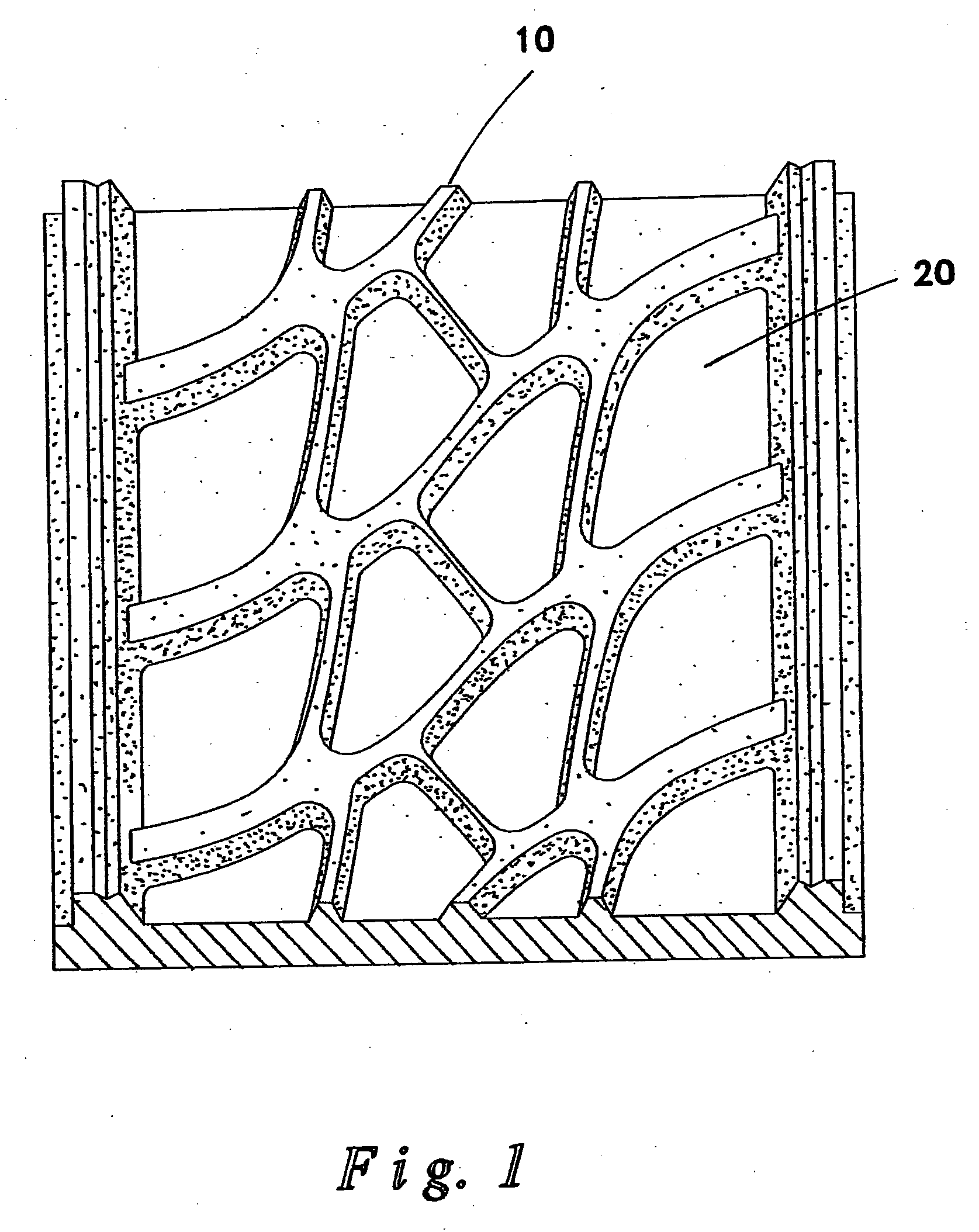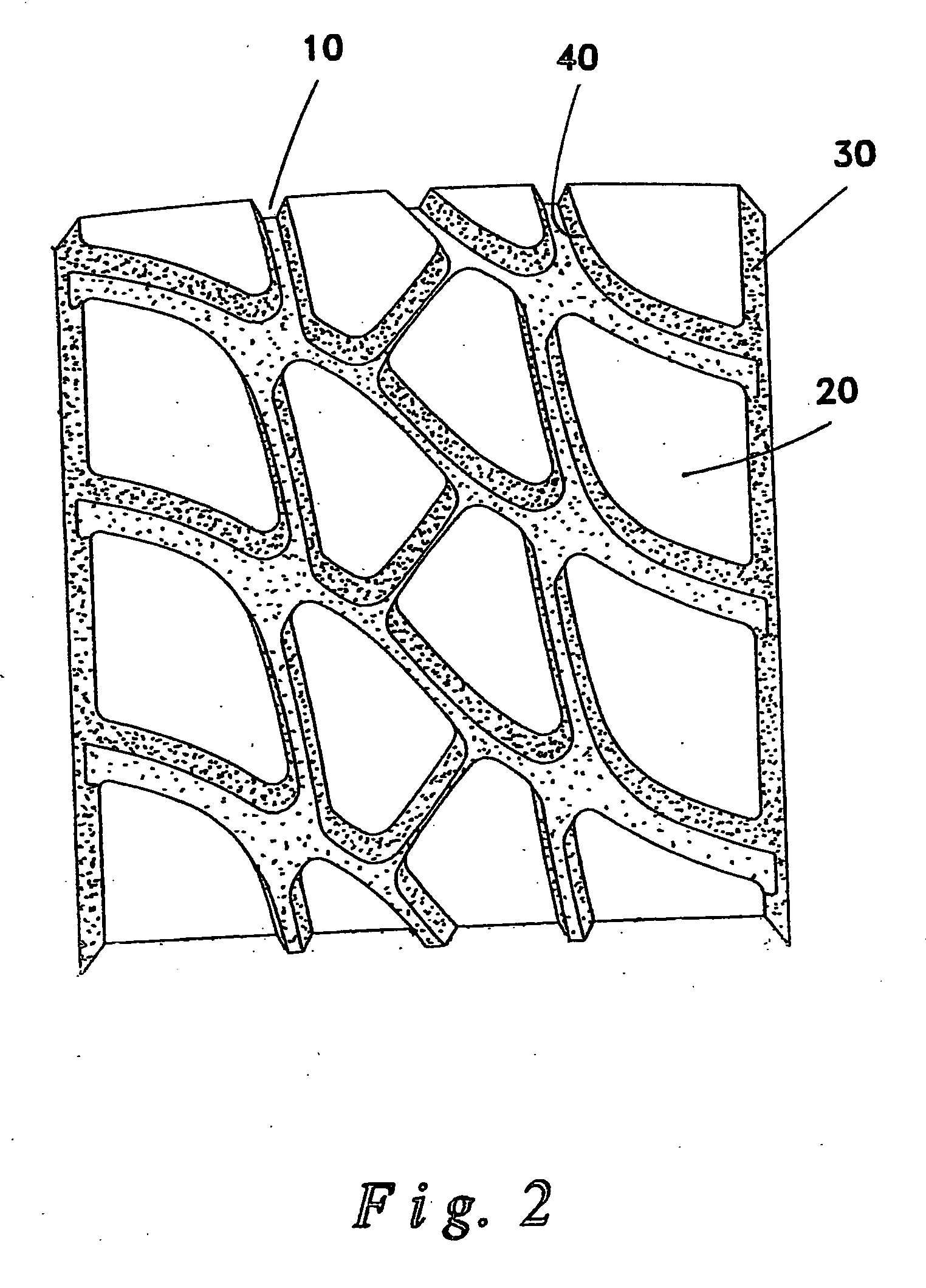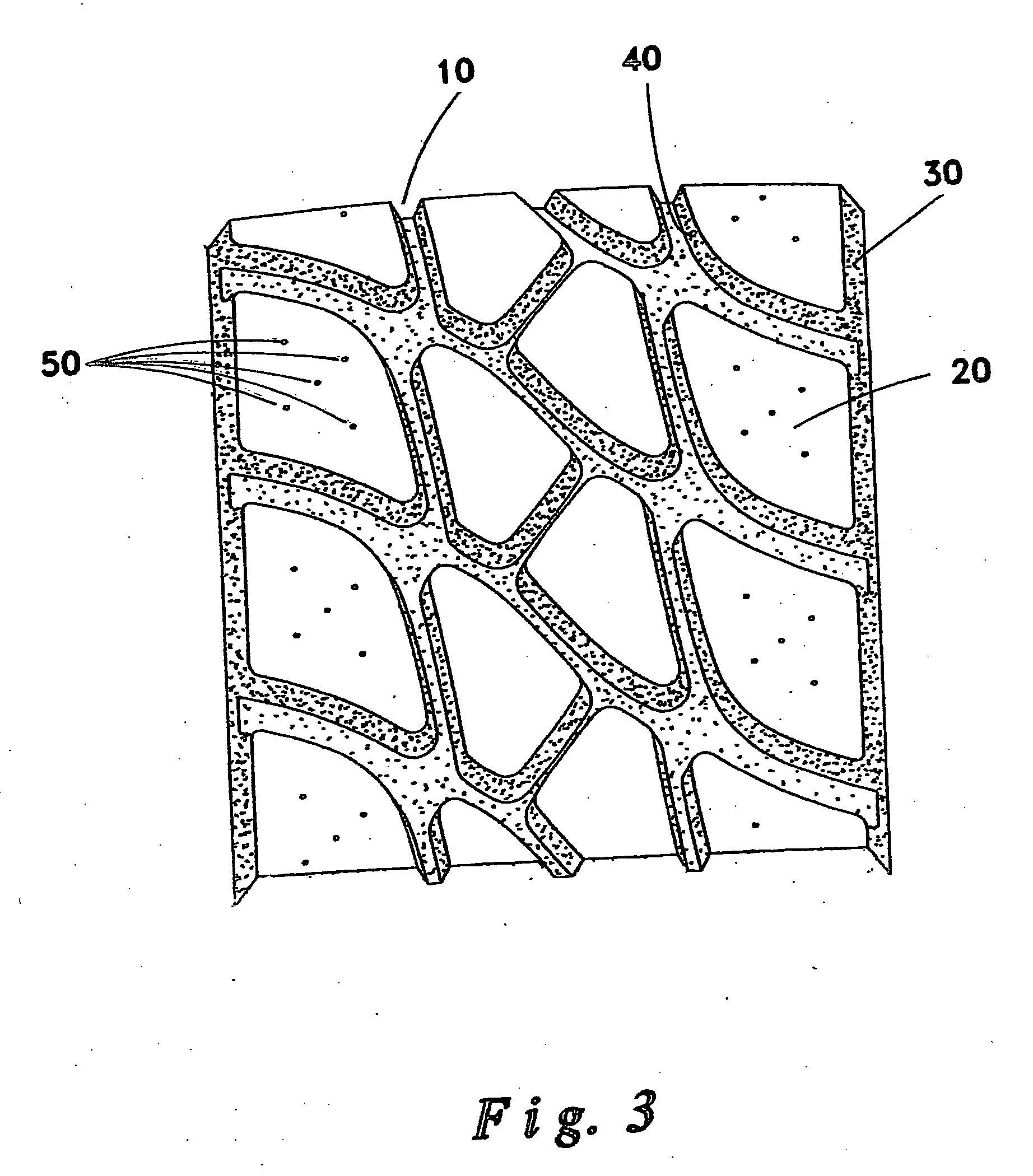Method for curing a thick, non-uniform rubber article
a technology of non-uniform rubber and curing method, which is applied in the field of curing thick, non-uniform rubber articles, can solve the problems of reducing production efficiency, wasting production time on vulcanizing machinery, and much more difficult analysis, so as to improve curing efficiency, reduce the total cure time, and improve the effect of curing
- Summary
- Abstract
- Description
- Claims
- Application Information
AI Technical Summary
Benefits of technology
Problems solved by technology
Method used
Image
Examples
example 1
Cure of a Tread for Recapping a Tire
[0066] The present method was applied to the cure of a tread for recapping a tire.
[0067]FIG. 1 shows a conventional flat tread sculptured mold segment for a pre-cured tire tread. FIG. 2 shows a sculptured tread pattern for the tread as a result of using the mold of FIG. 1 and using a conventional molding process. FIG. 3 shows the sculptured tread pattern resulting from the addition of pin heat transfer elements to the mold of FIG. 1. In defining the relative locations for the heat transfer elements (pins), the minimum cure-state location was first identified in the x-y plane of the tread pattern. This position was then used as a basis for comparison in the z-direction (or through the thickness of the tread block). The process of the invention can be used with a uniform composition tread or with a dual tread. A dual tread refers to a first tread layer used over a second tread layer.
[0068] In a commercial platen precure retread press, the top and...
example 2
Modeling the Use of Various Heat Transfer Elements
[0079] This example uses FEA modeling to show the reduction in cure time that can be achieved by the use of various shapes and types of heat transfer elements placed into a tread block for a typical pneumatic truck tire (FIG. 7 shows the shoulder region of such a tire). The tread block depth was 28 mm and the depth of the lateral grooves was 24 mm. For the reference case (i.e. without using any heat transfer elements), the cure time was calculated to be 57 minutes. The cure of this tire is limited by the cure of the shoulder area. For example, the bead requires 39 minutes to obtain an alpha of 0.9, and the sidewall requires just 22 minutes. Therefore, the bead has 18 minutes of additional heating and the sidewall has 35 minutes of additional heating.
[0080]FIG. 8 shows the heat “profile” which is developed in the shoulder region of the tire in FIG. 7. It is seen that, at the end of the press cure, the temperature within the center o...
example 3
Truck Tire
[0090] This example demonstrates the application of this invention to reduce the cure time in the press for a real “drive axle” truck tire. An existing truck tire design was chosen because of the long cure time required to sufficiently cure all parts of the tire. This tire dimension required 52 minutes under normal press cure conditions. An FEA model was used to evaluate the tire. It was determined that the large tread blocks on the shoulder of the tire were the cure-limiting zones. Using the FEA model, a configuration of heat transfer elements were introduced into the mold for the tire.
[0091] An arrangement of 8 heat transfer pins for the shoulder tread blocks, and a single mini-sipe (1100) having 3 pins included therein for internal tread blocks was chosen. The types of heat transfer elements and the pattern was developed to obtain a reduction in cure time without substantially changing the rigidity of the tread blocks. The objection is to not substantially change the ...
PUM
| Property | Measurement | Unit |
|---|---|---|
| width | aaaaa | aaaaa |
| width | aaaaa | aaaaa |
| thickness | aaaaa | aaaaa |
Abstract
Description
Claims
Application Information
 Login to View More
Login to View More - R&D
- Intellectual Property
- Life Sciences
- Materials
- Tech Scout
- Unparalleled Data Quality
- Higher Quality Content
- 60% Fewer Hallucinations
Browse by: Latest US Patents, China's latest patents, Technical Efficacy Thesaurus, Application Domain, Technology Topic, Popular Technical Reports.
© 2025 PatSnap. All rights reserved.Legal|Privacy policy|Modern Slavery Act Transparency Statement|Sitemap|About US| Contact US: help@patsnap.com



